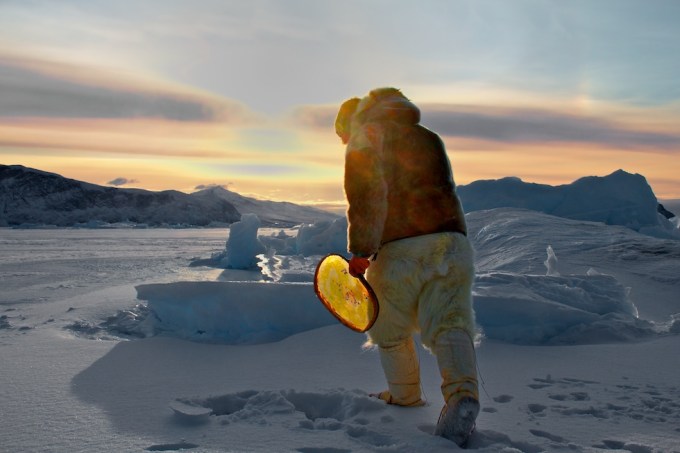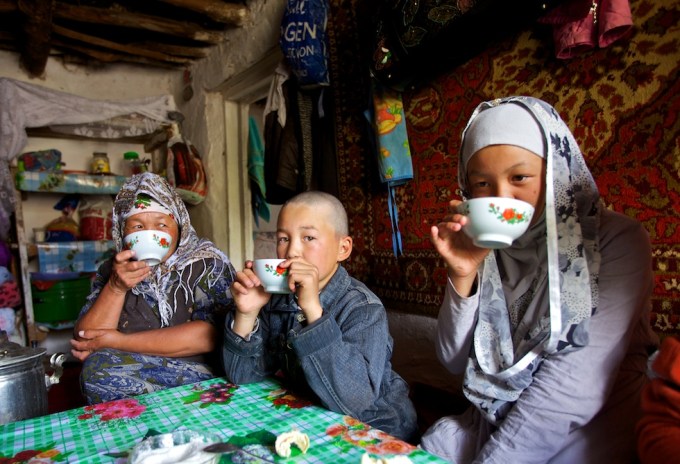Avannaa is an eyewitness cultural expedition to the world’s most isolated communities affected by climate and societal change. It offers a unique view of the people and their natural habitats in the hardest-to-reach places that otherwise stay invisible to the eyes of decision makers and general audiences worldwide.
“Avannaa” means “North” in Kalaalissut, or West Greenlandic. The northernmost settlements in the world are located in Avannaa, or Avannersuaq, the place also known as Thule Land, first described by The Greek explorer Pytheas in his now lost work, “On the Ocean”. Avannaa is a mythical place, a legend, but it also is a real place. It is a home to Inughuit, or Avannersuimit, formerly known as “Arctic Highlanders” or “Polar Eskimoes”, who now count only 800.
Avannaa is a very poetic name. There was a time when the sea ice in Avannaa was strong. There was a time when it was a center of a healthy living community, when everything – food, clothing, legends, and moral values – came from the sea ice. Songs about Avannaa were composed and stories were told beside seals’ breathing holes. Now, as the ice vanishes, people feel that they are rapidly losing the “ground” beneath their feet. But at least the word, Avannaa, stays intact – as a hope, as a prayer for the future.

Robert Peary Jr, Hivshu, the great grand son of Admiral Peary. The drum-dancer, the story-teller. Photo © Galya Morrell
Avannaa. We chose this name after talking to hundreds, if not thousands people all across the Arctic – from Nunavut to Chukotka. We could feel that this word – Avannaa – resonates in their hearts. Even those who live far away from the northwestern shore of Greenland, even as far as in Central Asia and Mongolia – the lands where the Eskimo migration had begun thousands of years ago, – thought that it was a good name.
Avannaa is a “nomad”, like our ancestors were. Expedition Avannaa avoids big planes and fancy ships. It avoids “spread-sheet” planning, it’s a paperless expedition. It rather follows its instincts and its ancestors’ paths. We travel simple. By dog sled in the winter…
…and by a small open boat in the summer. This fragile boat does not have a lot of protection from the elements: heavy storms and heavy rains which come along with the climate change…. Avannaa used to be a semi-desert, an ice desert, but not any more. Now at times it looks like a tropical rain-forest, and our daily occupation in the summer is scooping out the rain water – day and night – of the boat.
Away from the sea, inland, we travel by donkey and by horse – the most reliable transportation in Yakutia and Central Asia…
We also travel by foot which may be the most independent way of traveling…
… and in the tractor’s scoop – across flooded vasts of Siberia…. If I were a poet, I would write an ode to the tractor’s scoop. You can’t live a life without it here in the time of a climate change. Pensions are delivered in the tractor’s scoop, and so is mail, food and other essentials. Tractor is a taxi, a delivery truck and it is also an ambulance.
On our way, we observe and film rock and soil, earth and ice, water and sky, wind and currents, wildflowers and ancient lichens, foxes and ravens, seals and phytoplankton that too has to adopt to abrupt changes – often with little success.
Sometimes we spend weeks at sea… We get hungry, dirty and cold… We learn not to talk, to be silent. But then, at the end, we reach the state of mind when we are able get that close to these normally very shy and easily intimidated beings.
Climate is changing. Sea ice that used to be 2 meters thick some 20 years ago is now 10 cm thick. Dogs can not run. People can not travel. They become prisoners of their own islands.
For example – Narwhals, some of the most mysterious creatures of the North, tend to stay longer in the Far North in the summer time than ever before – due to the climate change. It’s a fact. Sometimes we can see hundreds of them, at the same time, and then it looks like a boiling sea.
We follow the animals, but our main interest is in people who live on the edge of the world. We want to know what happens to them in the times of uncertainty. Expedition Avannaa is definitely not about speed. We make stops in every single settlement and settle with people for some time. We eat with them, we listen to their stories, we dream with them. This is how we are able to find out first-hand what they think about changes in climate, travel, hunting, fishing and life in general.

Judith, the granddaughter of the Great Polar bear hunter Qaanngaaq Nielsen. Savissivik, Northern Greenland. Photo © Galya Morrell
What constitutes happiness for them? How do they see their future? We get many answers, and there is not black-and-white truth.
Expedition Avannaa tries to offer a unique view of people and their natural habitats in the world’s most isolated places that otherwise stay invisible to the eyes of decision makers and general audience worldwide.
Expedition Avannaa observes and thoroughly records life that exists in these areas today. Our main mission is not to make judgements but to make sure that the voices of the indigenous inhabitants of these areas are heard.
We are trying to build cultural bridges between distant lands, from Greenland to Chukotka, from Central Asia to Nunavut. If people can share the knowledge of their ancestors and talk about problems they are facing today they can have a better and happier life.
Contrary to popular belief, small isolated communities often described as the “Edge”, or even the “End” of the world my be just its beginning. A small isolated settlement is very often the place where one can equally see the distant and the near. And this is the place where you can look at the world with the eyes of a child. If Expedition Avannaa had a face, this would be our face. Like in an open book, you will read here everything you may want to know about us – there is very little we can add to that.




















